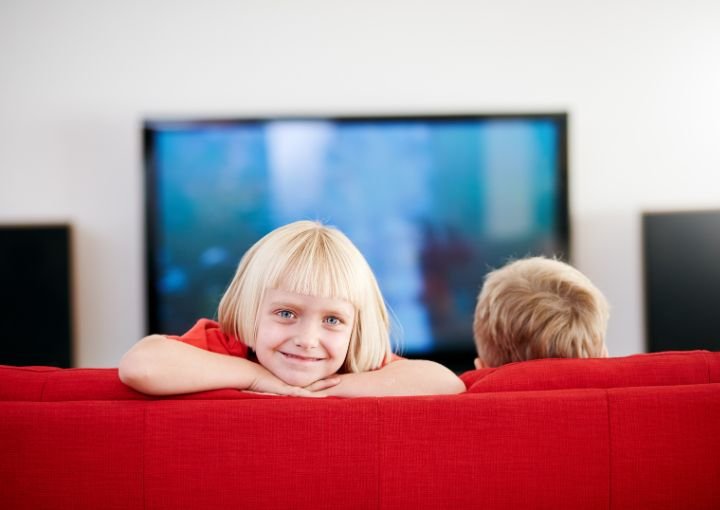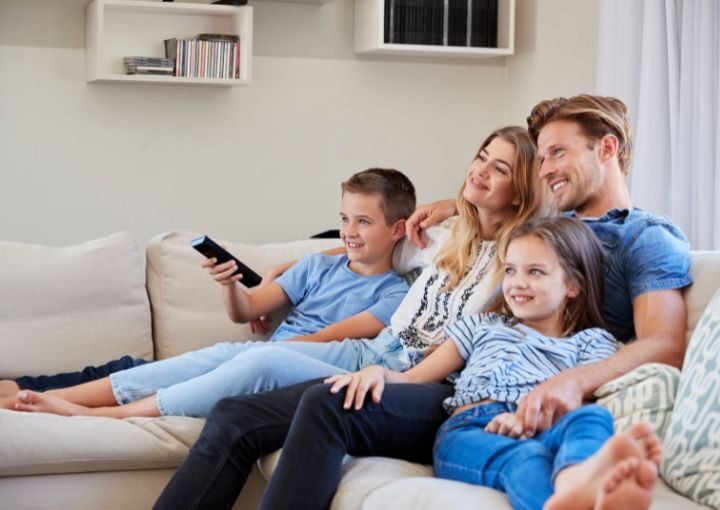From Nordic noir to Slow TV, here are 3 television concepts you may or may not know they come from the Nordics
Television in the Nordics is a big thing. Everyone tunes in to watch their kings’ and queens’ New Year’s speeches or the legendary old Christmas shows that repeat year after year (like Disney’s juleshow in Denmark or Kalle Anka – commonly known as Donald Duck – in Sweden).
That may contradict a popular view of the Nordic people as very advanced when it comes to media. Yes, indeed. Media literacy in the Nordics is at its peak (among the highest in the world).
And yes, Nordic people have engaged with online media (such as the internet and then the streaming platforms) longer than many other nations.
But television (in any of its modern-day forms) is still big in the Nordics. Whether sitting around the telly or watching from their mobile devices, Nordic people love television and have actively invested in media.
This is why quite a few television concepts have their origins there. Some of them are well-known and popular. Some of them are interesting to get to know.
And it all comes down to their long tradition with the media and their continuous desire to innovate and bring something new to the table (um, screen, to be literal).
Here are 3 television concepts you may or may not know that have their origins (or have been extensively developed first) in the far North of Europe.
1. Nordic noir
Surely, you know the series “The Bridge” or “The Killing”, right? If not, why do you even consider yourself a Nordic fan? Jokes aside, Nordic noir has proven to be one of the most popular and successful television/fiction concepts of the last 20 years or so.
For those not familiar, Nordic noir is a crime fiction genre that takes place in Scandinavia or other Nordic places. If you like American-style films and series, chances are you will find Nordic noir a bit strange. But it’s not in reality.
The stories are usually dark and complicated and take place in gloomy settings (many of them during the dark, frigid Nordic winter). The heroes are flawed; a happy ending is not the most common scenario.
Some of the most renowned Nordic noir writers are Henning Mankell, Stieg Larsson, Jo Nesbø, and Jussi Adler-Olsen. They have written many books, some of which have subsequently been transferred to the screen and are now regarded as Nordic noir masterpieces.
Apart from “The Bridge” and “The Killing”, which may mark the beginning of the era of global love for dark Nordic series, other well-known series are “Trapped” from Iceland, “Wallander” from Sweden, “Borderliner” from Norway, “Deadwind” and “Bordertown” from Finland, and “Trom” from the Faroe Islands.
2. Educational TV
Many may now wonder, “What’s the pioneering with that? It’s also in other countries!”. Yes, perhaps. But there is no other place than the Nordics where this unique blend of education and entertainment has been so extensively developed.

Two children from Sweden watching TV – Design by Canva Pro
Again, this has to do with the long tradition of media in the Nordics and the historically rooted need for adult education (if you want to read more on that, check out folkoplysning in Denmark or study circles in Sweden).
However, it’s not only about adult education; children’s education has traditionally been a high priority of Nordic states and societies, too. The advances of media and television cannot be left out of that. Consider this: when Disney Channel launched in Scandinavia in the 2000s (Sweden was the first country to give Disney the licence to broadcast), the public broadcasters responded swiftly by creating their own children’s channels (like DR Ramasjang in Denmark).
Adults or children, everyone had to be educated while entertained. This is why educational television got a big headstart in the Nordics. Not only are there channels targeted to children (with both educational and entertaining shows), but the educating aspect has also spread to all target groups.
In its present form, educational TV in the Nordics may as well include reality shows where certain lessons are learned or specific values (like teamwork or equality) are promoted.
If you switch to Nordic media or visit their web TVs, you may, for example, catch a new episode of “I hus til halsen” (literally translating to “In the house up to the neck”) where ambitious homeowners of the past tackle their personal financial problems related to their house (e.g. debt because of a mortgage that is no longer sustainable) with the help of experts. And all this while renovating their minimal -or not- Nordic houses to sell them at a good price.
3. Slow TV
If you find Nordic noir plots slow, then watch this: Slow TV. Originating in Norway, this new TV concept can serve as an antistress therapy.
Lives are hectic, and stress kicks in. People dive more and more into never-ending stress loops about things of the past or scenarios for the future. We lose touch with the here and now. Not being present but feeling constantly worried or concerned about what happened or what might happen can only be bad for mental health.
Slow TV is about the here and now. The concept popped up during a lunch of a local NRK (public TV in Norway) team. They had published a lot of documentaries in the past, the last of which was one about Bergensbanen (one of the most scenic train routes in Norway, between Oslo and the coastal city of Bergen in the west).
They still had a lot of unpublished material and footage. So why not get that out as well? This is how the first ever Slow TV show in Norway was born in 2009: Bergensbanen minute by minute – train journey across Southern Norway. Hours of footage without commentary, just to be present and enjoy the route and majestic landscapes.
That was the beginning. After that, many new Slow TV shows came out every single year, from more scenic rail routes in Norway to salmon river fishing and a national knitting night (all you can knit in one night, sort of).
Slow TV was even declared “Word of the Year” in Norway in 2013. Kudos!
The concept then spread to other Nordic nations, too. If you fancy enjoying the views and sounds of Swedish nature and mooses, check this out and dive into the Great Moose Migration in western Sweden.
Speaking of television and media, did you know that all the Nordic countries have long had licence fees paid by citizens to support and finance their public media broadcasters? Here are some interesting facts.
TV licences in the Nordics – Then and now
Do you own a TV set? Then you have to pay the licence fee. How does that sound? That was the case in the Nordics for decades. It was a way to finance public media and help them remain objective and high-quality, with as few ads as possible.
Today, this citizen-funded financial support for the Nordic state broadcasters is still there; it has just changed form. Instead of paying the fees, new taxes have been introduced so that anyone with taxable income has to pay them (directly or indirectly – as less tax deduction).
This new system is considered more sustainable (for the broadcasters) and fair (for the people). This way, only those who have income have to pay, the fee is now lower (vs. the household fee without any conditions before), and everyone can enjoy high-quality public media. Sounds legit!

